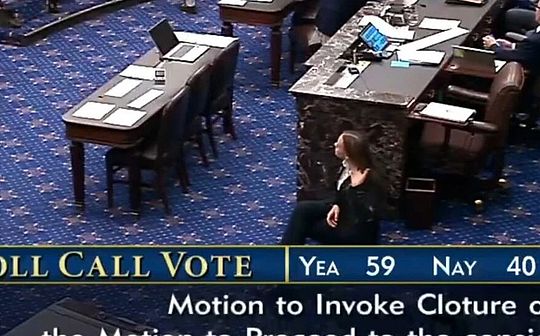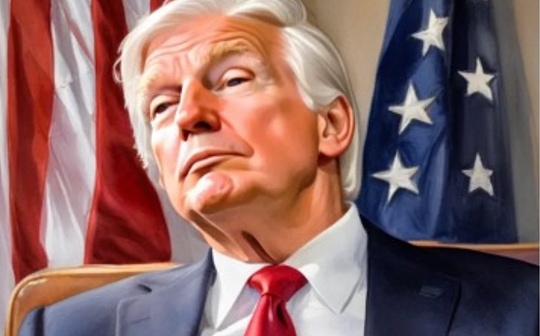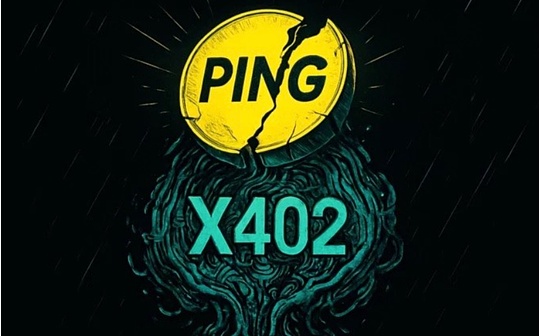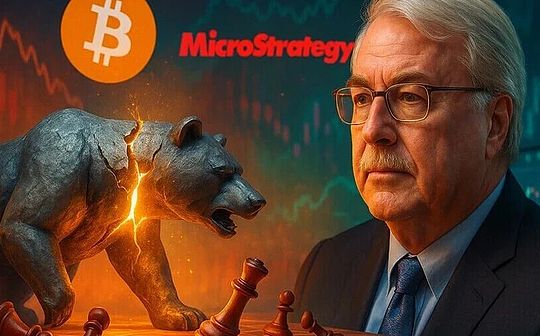
The content of this issue is a roundtable discussion on Hong Kong and Mainland policies at the Finternet 2025 Asia Digital Finance Summit. The participating guests are Colin Wu, founder of Wushuo Blockchain, Kevin Cui, executive director and CEO of OSL Group, Patrick Pan, senior advisor to the chairman of China Renaissance, and Livio Weng, executive director and CEO of Xinhuo Technology.
The guests deeply discussed the impact of policy changes in Hong Kong and the Mainland on the Web3 industry, especially the market performance of innovative financial instruments such as Bitcoin, stablecoins and DAT (digital asset treasury). They analyzed whether the current market is in a critical period of transition from bull market to bear market, as well as the market prospects and challenges of DAT in the context of price fluctuations in US stocks and Bitcoin, and policy restrictions on stablecoins.The guests also shared the different policy directions of Hong Kong and the Mainland in the encryption industry, as well as Hong Kong’s positive performance in gradually relaxing regulations and promoting financial innovation.
Has the current market reached a bull-bear turning point?
Colin: Now the market has indeed reached what many believe is an expected turning point.For example, yesterday the co-founder of AllianceDAO believed that the vast majority of traders and institutions around him were beginning to be bearish.In the past two days, especially in the past 12 hours, the market has also declined to a certain extent.Do you think the industry has reached a turning point from bull to bear, or is it just a short-term decline, and may it return to the track of a bull market?
Kevin: Let me start by saying that this is not financial advice.In fact, I have not done contract trading for a long time. If it is a leveraged product, everyone should still pay attention to the risks.We had a saying before: “Cherish life and stay away from contracts.”Judging from the market trend, I personally believe that there is currently no sign of turning from a bull market to a bear market.If Bitcoin drops below $100,000, I personally see that as a buying opportunity.Because in the long term, the market growth trend has not changed. This is my personal opinion.
Patrick: My view on the market is that this round of cyclical changes is very large.As we all know, Bitcoin is basically the benchmark for the entire market, and the market generally follows the cycle of Bitcoin.Generally speaking, there is a cycle every four years. We have said before that “one bull and three bears”, that is, a bull market for one year and a bear market for three years in four years.But I think the cycle may be different now.Because of the policies of the entire Trump administration, and everyone is also aware of policies such as the Genius Act, my overall judgment is that the market cycle will be relatively balanced, maybe two bulls and two bears, rather than the traditional “one bull and three bears.”
So, I now think the market is in the middle stages of a bull market.Now is neither the highest point nor the lowest point, and everyone will be more cautious.The core point is not to chase highs. If the market pulls back, it will be a very good opportunity.This is my judgment on the market.
Livio: Our views are quite consistent. The market cannot have completely entered a bear market, and the bull market has not ended.It is more likely that after a rapid rise, the market needs to stop and enter the shock consolidation stage.From a macro perspective, the total amount of stablecoins is still growing, and others such as national sovereign funds, listed companies, and mainstream institutions are also purchasing them.At the same time, the Federal Reserve’s interest rate cut policy continues, and the macroeconomic outlook is not that bad. Other assets such as U.S. stocks and gold are also performing well.
But the encryption industry still faces some problems.On the one hand, there was the past round of massive turbulence, which caused the market to rise too quickly, such as Ethereum rising from more than $1,000 to nearly $5,000.Such a rapid rise will allow investors who entered the market at low prices early to start cashing in profits. This is an inevitable phenomenon in the market. No market will rise forever.
In addition, the industry is also facing huge impacts.For example, the recent plunge has led to a reduction in the industry’s total position amount and a significant reduction in liquidity.Some core institutions and backbones experienced runs, which directly affected market liquidity.Subsequently, a series of problems occurred in the industry, including Balancer theft, Stream and other issues, which all had a negative impact on the healthy development of the industry.At the same time, another important factor is that whale investors on the chain frequently operate, and the intervention of certain political forces also affects the market trend.
These factors have made many smart money who originally planned to enter the market hesitate.Many people have begun to worry that they may become the target of political forces to manipulate the market, and major changes may occur at any time, causing the market to collapse. Such changes in confidence will have a huge impact on the entire industry.However, according to recent data, the Fear Greed Index has dropped into the 20s, which generally means that the market has become overly panicked, and a lot of smart money may see a healthy investment opportunity at this point.Therefore, fear and greed coexist, and sometimes extreme market sentiment may bring an opportunity for a rebound. As Patrick just mentioned, the market still has a chance to rebound, but it just takes some time to adjust.
Going back to what Patrick said, this does not mean that the bull and bear markets have turned, and that the characteristics of bull and bear markets may break in the future.In the past, bull and bear markets were mainly affected by the Bitcoin halving cycle, but now the impact of the four-year cycle on the market is weakening.The involvement of traditional capital has also made the market more complex. Future cycles may no longer be so obvious, and the characteristics of bull and bear markets will become more blurred.
Overall, I don’t think it’s a particularly pessimistic market situation right now.
DAT’s Overhyping and Market Cooling
Colin: Next, let’s discuss DAT, which everyone is more concerned about.We see that every Monday, Tom Lee’s Bitmine is still buying like crazy, but the price of Ethereum continues to fall.Could Bitmine be the next micro strategy?
The three guests here, your companies are also deeply involved in DAT-related business.There is a lot of discussion about DAT in the market, and feedback from regulators is mixed. Even Tom Lee himself said that DAT may have reached its breaking point.Of course, his usual rhetoric is more radical.So what do you think of DAT at this stage?After it has experienced a feverish development, does it still have abundant opportunities, or has it entered a stage of survival of the fittest?
Livio: Regarding DAT, I think it needs to be looked at from two aspects.First of all, DAT was indeed a new thing that was overly touted in the previous stage. After the market turned cold, everyone saw a lot of hot money in the past being liquidated, and the market also had doubts.But by its very nature, DAT is still an important industry Pareto improvement.
In the earliest days, from 2013 to 2017 and 2018, everyone could only buy cryptocurrencies through exchanges, and the threshold for exchanges was very high.Many people have to trust these platforms and even need to climb over the wall to enter. In addition, it is also difficult for funds to enter the market.
Then in the past two years, the emergence of ETFs has made it easier for traditional capital to enter this market.Although many funds believe that ETFs are not within their tradable scope, a large number of funds and traditional funds have already purchased stocks in the stock market instead of buying coins, or acted as a lightweight channel to buy coins.This is a better channel for traditional investors.
As Xiao Feng (Chairman of Wanxiang Blockchain) once said, ETF is good, but DAT is better, and it can play a more important role, especially companies such as MicroStrategy have proven this.Right now, I think we’re in the validation phase.The upside of DAT is that when the market is particularly good, the mNAV (market net asset value) of many DATs will reach several times, double or even triple, showing its premium.But when the market goes down, we need to pay attention to where the downside risks of DAT are.We want to verify if DAT will crash.If it survives this correction, it will still command a good premium as the market rebounds in the future, which will prove its business model.
Judging from the situation in recent days, we can observe whether the mNAV of head DAT will be significantly lower than 1. If not, then DAT’s business model can stand in the industry and there will be better opportunities in the future.In contrast, DATs that are small and illiquid may have difficulty surviving in the market.Therefore, if you want to participate in DAT, it is recommended to choose the top DAT.
Patrick: Let me also briefly share my thoughts on DAT.I think DAT is a very important innovative financial tool that provides more active management flexibility compared to holding currencies directly or buying ETFs.Although the overall development of DAT faces some challenges, not least the complexity of its operations and management.
The biggest challenge is, as Livio just mentioned, whether the mNAV of DAT will be lower than 1. This question is worth thinking about.When a company’s market cap is less than its net worth, where exactly is DAT worth?But I think, after analysis, it is impossible for the mNAV of DAT to remain too high for a long time, for example, if it remains at a level of 2 or 3 for a long time, I think this is unlikely to happen.In the long term, DAT’s mNAV will return to a reasonable premium level over time, around 30%-50%.
A reasonable premium for DAT is 30% to 50%, and I personally think this range is acceptable.If MicroStrategy can maintain this premium, it proves that this market has potential.We can also see that the development of DAT has gone through several stages.
In the first phase, microstrategy can be seen as version 1.0 of DAT.In the 1.0 stage, DAT is essentially like a simple fund with not many people participating. Its main business is to buy Bitcoin, especially when others do not buy, it will still insist on buying, which makes it super bullish.
For many funds and institutional investors, they do not require managers to bear the risk of market downside. As long as they maintain a super bullish attitude, it can become a very good hedging tool.However, when the market changes, the losses of this type of strategy are often far greater than the market decline.Bitcoin is down 20%, it could be down 40% or more.Next, DAT entered the 2.0 era.
DAT 2.0, at least from my perspective, we can think of DATs like Solana backed by Tom Lee, Ethereum-based DATs as 2.0.It is different from 1.0. Version 2.0 adds functions such as staking, yield and passive income, which makes its operating model more attractive.
This approach is very different from the way Bitcoin is invested, in that the passive income it generates is usually enough to cover its operating expenses, including legal and audit costs, so DAT does not need to sell additional shares to maintain operations.We have seen that companies such as Tom Lee have been very successful in raising capital in the US stock market, especially when they were listed on NASDAQ.
However, we also see a continued decline in the mNAV of DAT, even below 1.This is more of a strategic consideration to prevent later investors from entering the 2.0 stage.I believe that for DAT to continue to move forward, more innovation is needed to break through the current challenges.Simple staking and yield are not enough, it needs more business model innovation, otherwise it is just a fund.After the staking function of ETH is gradually implemented, DAT will face more competition.
I think DAT still needs to enter version 3.0, or 2.0 Plus stage.After passive income and staking, other new income models are needed to remain competitive.Overall, I think DAT is currently entering an adjustment phase, and I strongly agree with Livio that only leading companies can survive.
If leading companies are to survive, they also need new business models.If you only rely on buying coins and staking, the market may not accept it, and the premium will return to between 10% and 30%, which is far lower than the net value of directly holding coins.
Kevin: Yes, I think DAT is an innovative financial instrument.Compared to ETFs with cryptocurrency as the underlying asset, DATs provide more active management flexibility, including flexibility in financing and operations.This flexibility makes it in particular demand in the stock market, especially for some businesses that are subject to policy restrictions and cannot hold cryptocurrencies directly or more safely.
So I think there is definitely a demand for DAT in the market.As a financial instrument, it has two sides.First of all, it is very important whether the operation is good; secondly, if you invest in DAT, you need to know what you value.Different DATs have different crypto asset backgrounds and operating models, which is very important to investors.
Likewise, I agree with the second point mentioned by Patrik and Livio earlier: the end result may be the “28 effect”.Companies that can become very big must be those that are well-run and have high-quality assets, and the number of these companies is limited.In the future, we may see more problems, such as the emergence of some scammers.The future is likely to see DAT companies becoming more transparent, particularly with regard to hosting and operating models, and increased transparency may be an important direction for the industry.
Discuss the impact of Hong Kong and Mainland policies on the Web3 industry
Colin: Next we discuss recent policy-related discussions.In the past six months, policies in Hong Kong and mainland China have undergone major changes.It can be said that Hong Kong’s policies are relatively stable and are understood in a step-by-step manner. Some new regulations are issued according to the plan every year, including yesterday’s announcement of new explanations or regulations and some relaxations and adjustments.
However, the policy performance of mainland China in the past six months has been somewhat “ice and fire”. This extreme change has also affected the overall environment of Hong Kong to some extent.My personal feeling is that almost all mainland state-owned enterprises and banks in Hong Kong have begun to set up stablecoin-related groups to conduct research, apply, and recruit personnel. Cooperation is unprecedentedly popular.But overnight, regulatory agencies may issue instructions to every company, and these activities stop instantly. Even now, the entire atmosphere has become a bit “overreactive”, and everyone does not even dare to discuss stablecoin-related matters anymore.
But on the other hand, Hong Kong’s overall policy direction, including the introduction of laws and regulations, is relatively stable and solid.While some believe the pace may not be fast enough, we are seeing some positive progress being made incrementally each year.This is cause for optimism.So the next question is, please share your views on policy changes during this period, especially your predictions on the possible policy trends in Hong Kong and mainland China in the next six months or one year.Let’s start by asking Kevin to share.
Kevin: Regarding mainland China’s policies, I am not in a position to make further comments, but from the perspective of Hong Kong’s overall policies, although Hong Kong’s policies may not be that radical, we do see that Hong Kong’s policies are becoming more and more open and are gradually able to actively accept good international changes and trends.
This is very exciting for our company in Hong Kong, especially the services we provide based in Hong Kong and overseas.With the release of the Liquidity Sharing Order Department policy yesterday, I believe that better liquidity will be provided to all customers in Hong Kong, which is undoubtedly a very positive thing for the Hong Kong financial market.From an overall perspective, as the world’s third largest financial market, Hong Kong’s gradual opening up of its policies is beneficial to the entire industry.Although Hong Kong’s regulatory policies may not necessarily be very radical, we can see some positive changes every year, which is worth celebrating.
Patrick: My judgment on future policies is that the central government has clearly positioned Hong Kong as an important policy highland for the encryption industry.First of all, Hong Kong has obtained the right to issue VATP licenses. It started piloting stablecoins last year. This year it may announce the first list of stablecoins, and next year it may obtain more VAOTC-like licenses.Therefore, the central government recognizes Hong Kong as the policy center of Greater China and even the global encryption market, and Hong Kong’s positioning has not changed.
In addition, regarding stablecoin policies and RWA (real asset) policies, many central enterprises, state-owned enterprises, banks, and Internet companies have participated in applications and projects for stablecoins and RWA in the past, showing the active promotion of these policies.I believe that Hong Kong’s policies may become more focused and tightened in the short term, especially in terms of helping local companies quickly develop stablecoin pilots and provide liquidity. This direction will basically not change.Overall, Hong Kong’s positioning and policy advancement, especially within the crypto ecosystem, should not change.
As for mainland China, I think it may not be open to the crypto industry in the short term.However, Hong Kong is still the best place for companies engaged in this industry. Whether it is through RWA or various tokenization methods, Hong Kong can provide a good development environment for the encryption industry.
Livio: Yes, I think this year we have indeed experienced a rare reversal, from the previous extremely open policy to now the beginning of control.This situation actually happened in 2017, when there were also rumors about licensing.
Colin: At that time, the rumor was that it would issue cards to Huobi, for example, right?
Livio: Yes.Later, it was discovered that as a series of events developed, everyone’s understanding of this new thing became complicated, and the risks that accompanied it also increased.In particular, the national conditions in mainland China are very complex. For example, when everyone started discussing stablecoins in the middle of this year, the discussion was very heated, and many financial institutions were eager to try it.However, there is a group that has become particularly active at this time. They have begun to launch various tokens under the banner of “state support”, claiming that they can double like Bitcoin, and even say that they can increase hundreds or thousands of times.As a result, many people were scammed.
In fact, what the country saw was that these financial wrongdoers were using the concept of cryptocurrency to deceive a new wave of investors, which led to the suspension of the policy.Looking back at 2017, the policy controls at that time were not actually due to denying the value of Bitcoin and Ethereum, but a reaction to these chaos.There were thousands of IEO and ICO projects at that time, and many teams were able to defraud large amounts of money with just a simple PPT. This financial chaos was similar to the P2P situation back then.This is due to the complex national conditions and the different educational backgrounds and understanding abilities of many people, which has led to the emergence of a series of financial scams.
That’s why the country decided to let Hong Kong serve as a test field. There are many comprehensive considerations in this.Back to Hong Kong, in the past three years, especially from 2022 to 2025, Hong Kong has been exploring the right path of policy.Judging from industry observations, the Hong Kong government’s policies have been relatively fumbling in the past three years, but since this year, the policy has gradually found its direction.In particular, some recent major measures, such as the opening of No. 7 exchanges, which are no longer subject to 12-month restrictions and can connect global liquidity, all indicate that Hong Kong’s regulatory policies are accelerating to open up to the industry.
Hong Kong’s regulation has done a pretty good job of addressing the challenges facing the Web3 industry.Although the supervision of emerging industries is inherently difficult, especially in rapidly developing industries like Web3, which have experienced many risk events in the past few years, Hong Kong’s policies have been gradually implemented and steadily advanced, and the future of the industry is still full of hope.
We have come across regulations in countries like Japan, Singapore and the United States, and they all face the same dilemma – how to regulate effectively without excessive intervention.Although some people criticized Hong Kong’s slow progress, these policies were eventually implemented. We have seen that Hong Kong has changed from “crossing the river by touching stones” in the past to gradually building regulatory confidence. The government has been able to conduct appropriate opening up while ensuring the healthy development of the industry.
In the next three years, Hong Kong’s policies will become more mature, especially in terms of supervision and industry development.Just like a child going from toddler to school, Hong Kong’s encryption ecosystem will enter a more mature stage, and the entire industry will develop faster.
Colin:Okay, thank you all. Thank you very much for participating in today’s event. I hope you can jointly promote the development of the Web3 industry in Hong Kong and the Chinese-speaking area, so that this industry and community will continue to grow.






